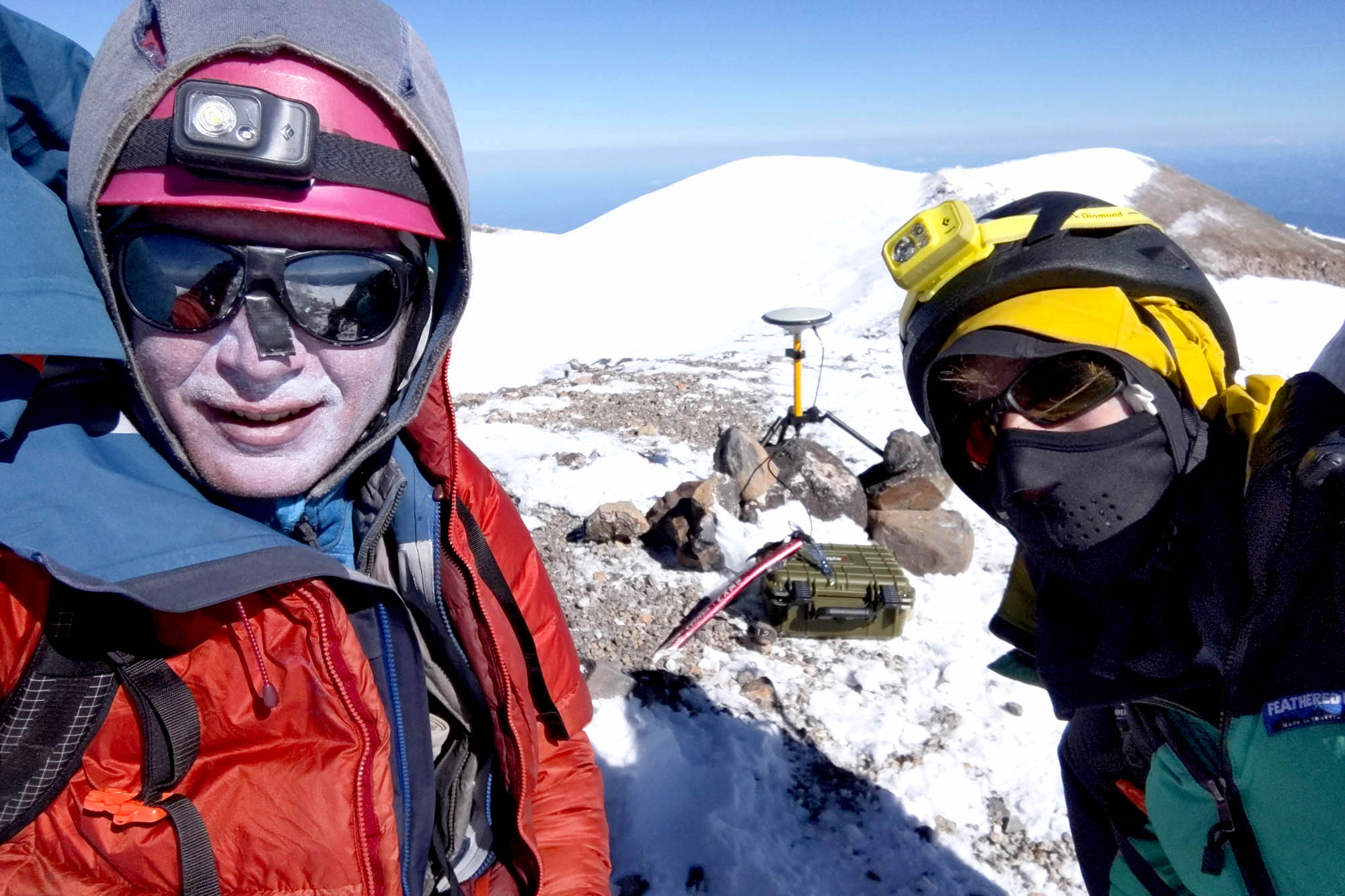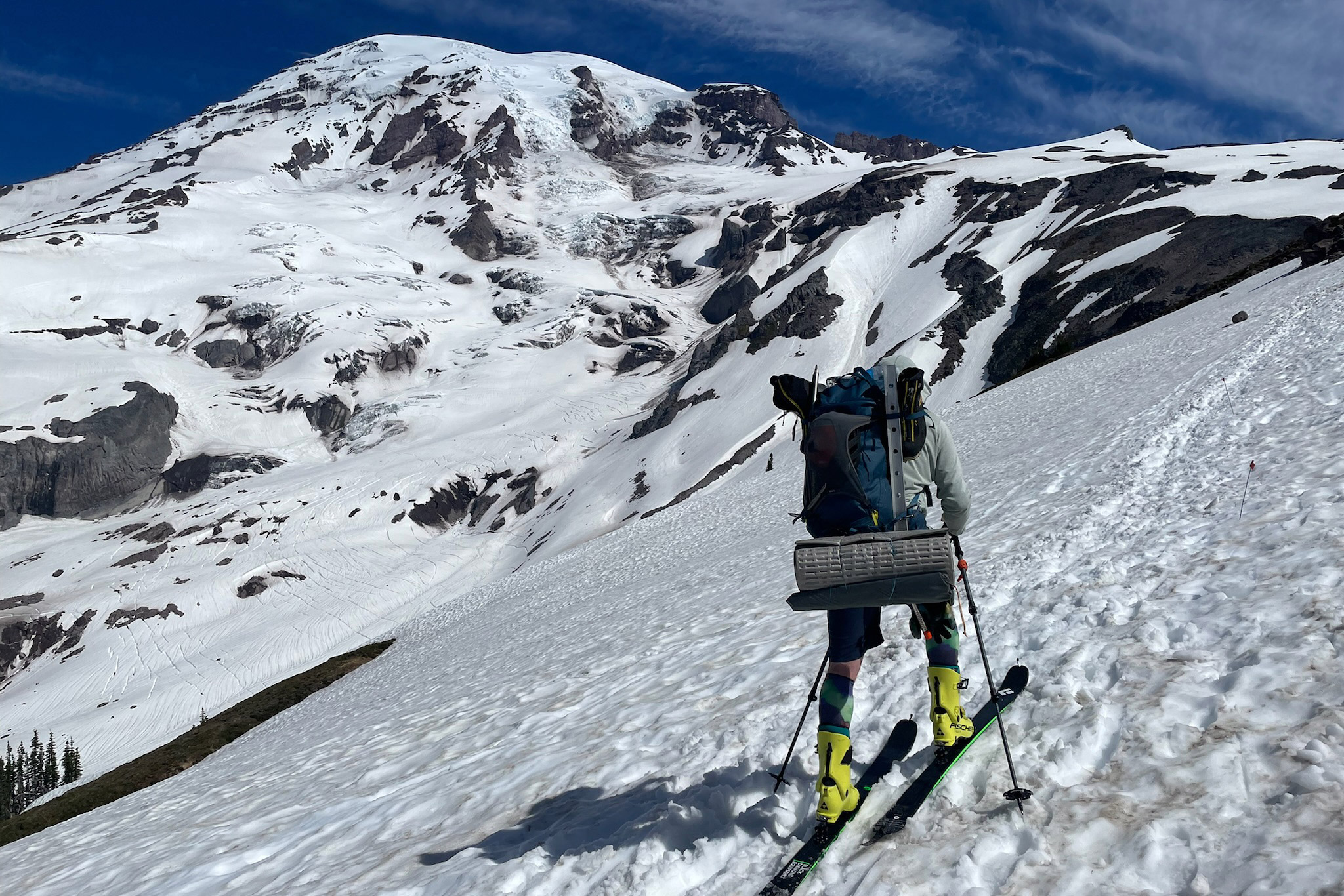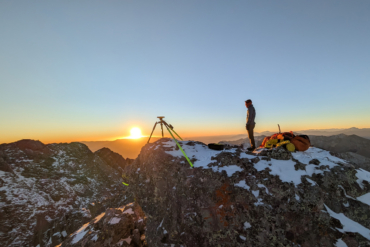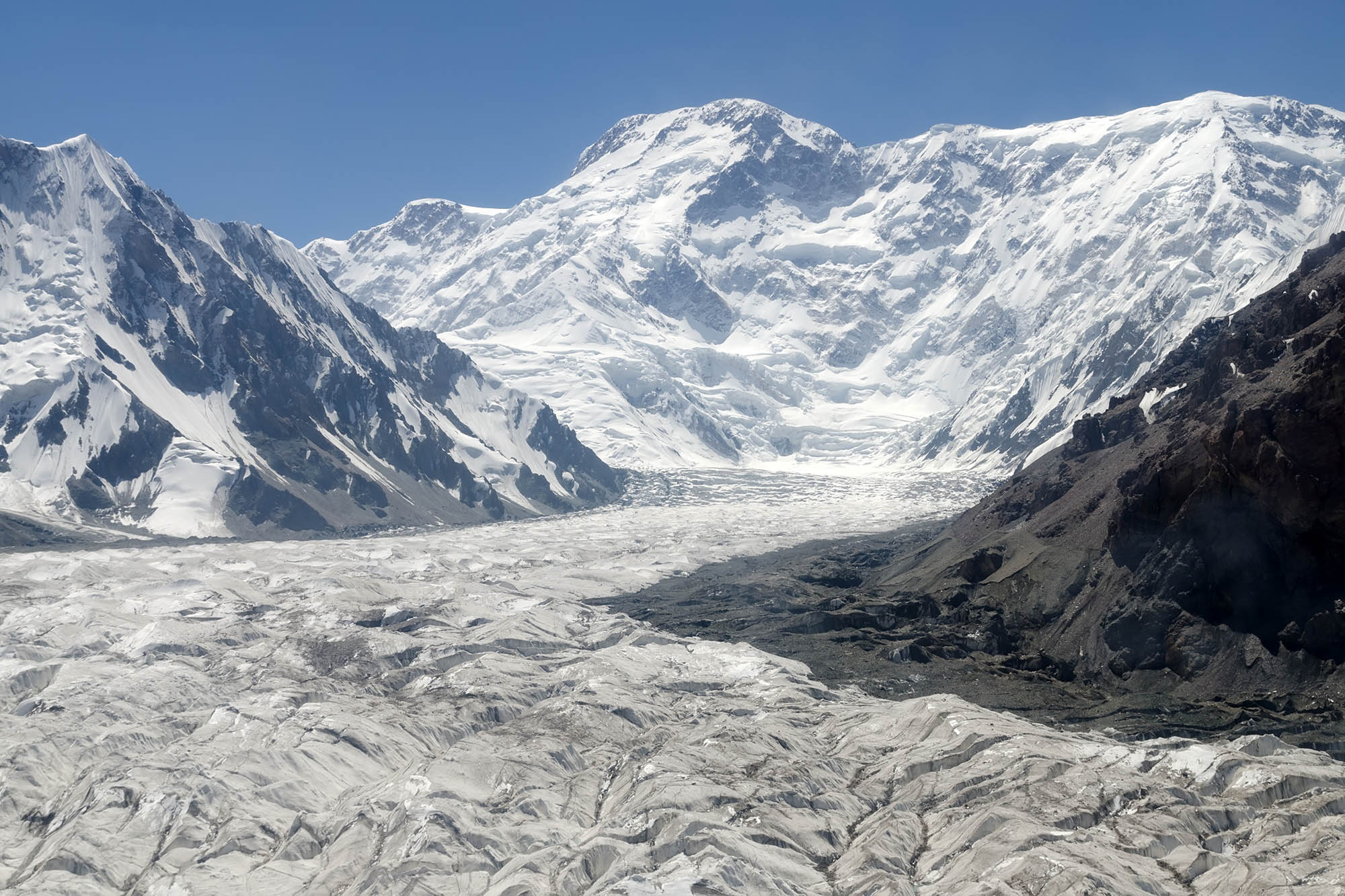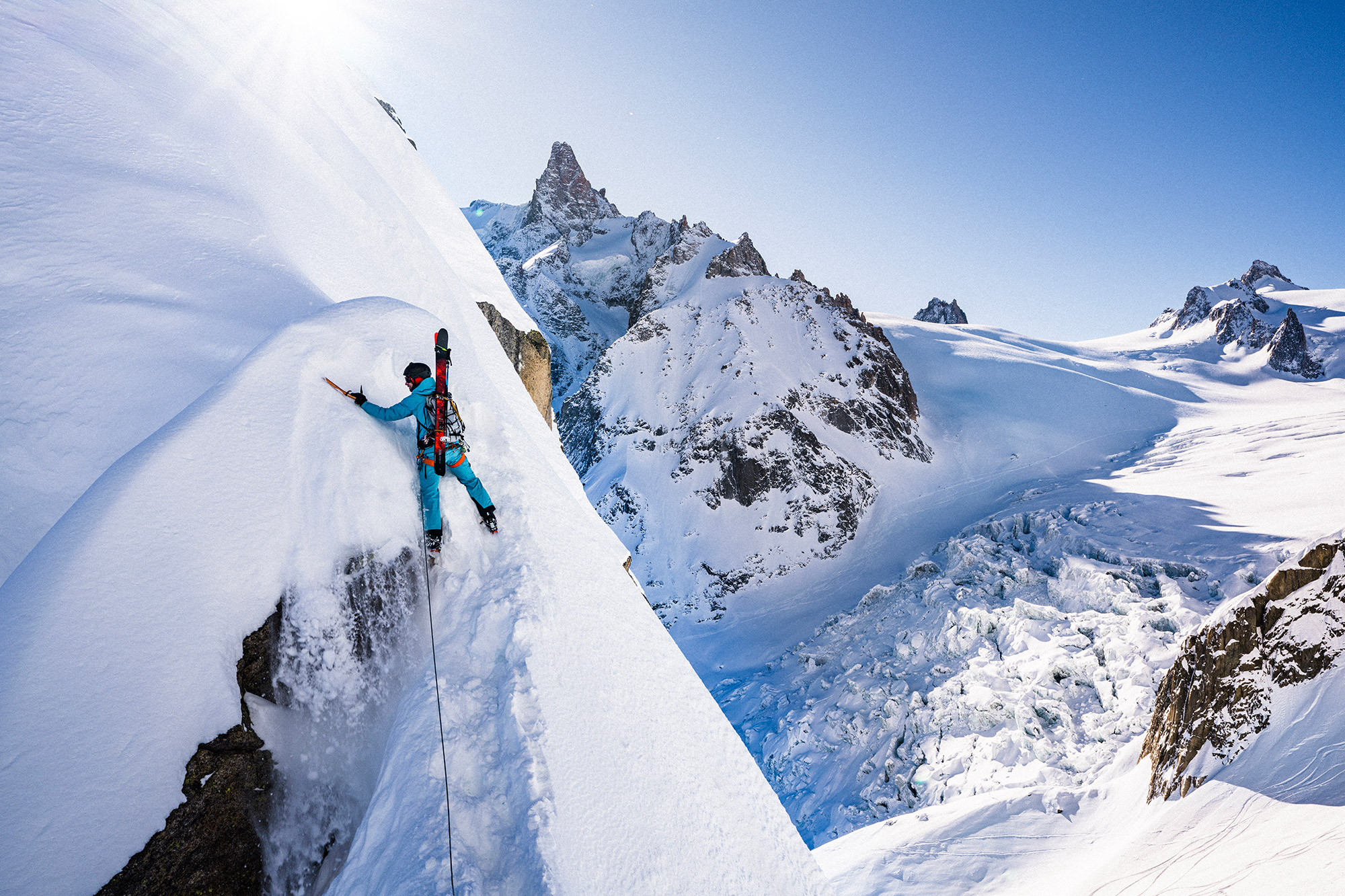In September 2024, Eric Gilbertson arrived at Mount Rainier with a grant from the American Alpine Club and a simple mission — to find out if the summit was still where everyone thought. Gilbertson, an accomplished climber and surveyor, has sized up mountains all over the world, updating old elevation estimates by taking more exact measurements with modern technology.
He wanted to measure Rainier at the end of summer when its icy summit would be the most affected by months of warmer weather. It’s also roughly the same time of year the U.S. Geological Survey took the previous measurement in 1998. Gilbertson had attempted this mission in 2023, but wide crevasses prevented him from reaching Rainier’s summit.
“I couldn’t remember that ever happening,” Gilbertson, an engineering professor at Seattle University, told GearJunkie.

His 2024 attempt was successful, though. When he reached the top, he confirmed his suspicions. The mountain’s summit, known as Columbia Crest, had melted nearly 22 feet since 1998. It was no longer the highest point on the mountain. The new summit location is a rocky point elsewhere on the upper rim, about 500 horizontal feet from Columbia Crest.
Now that it’s located on rock, Rainier’s summit isn’t likely to change again. But it raises other questions: How many other summits aren’t where we thought? And if the summit can melt off the mountain, what else is changing?
Climate Change at the Top of the World: Mount Rainier’s Changing Summit
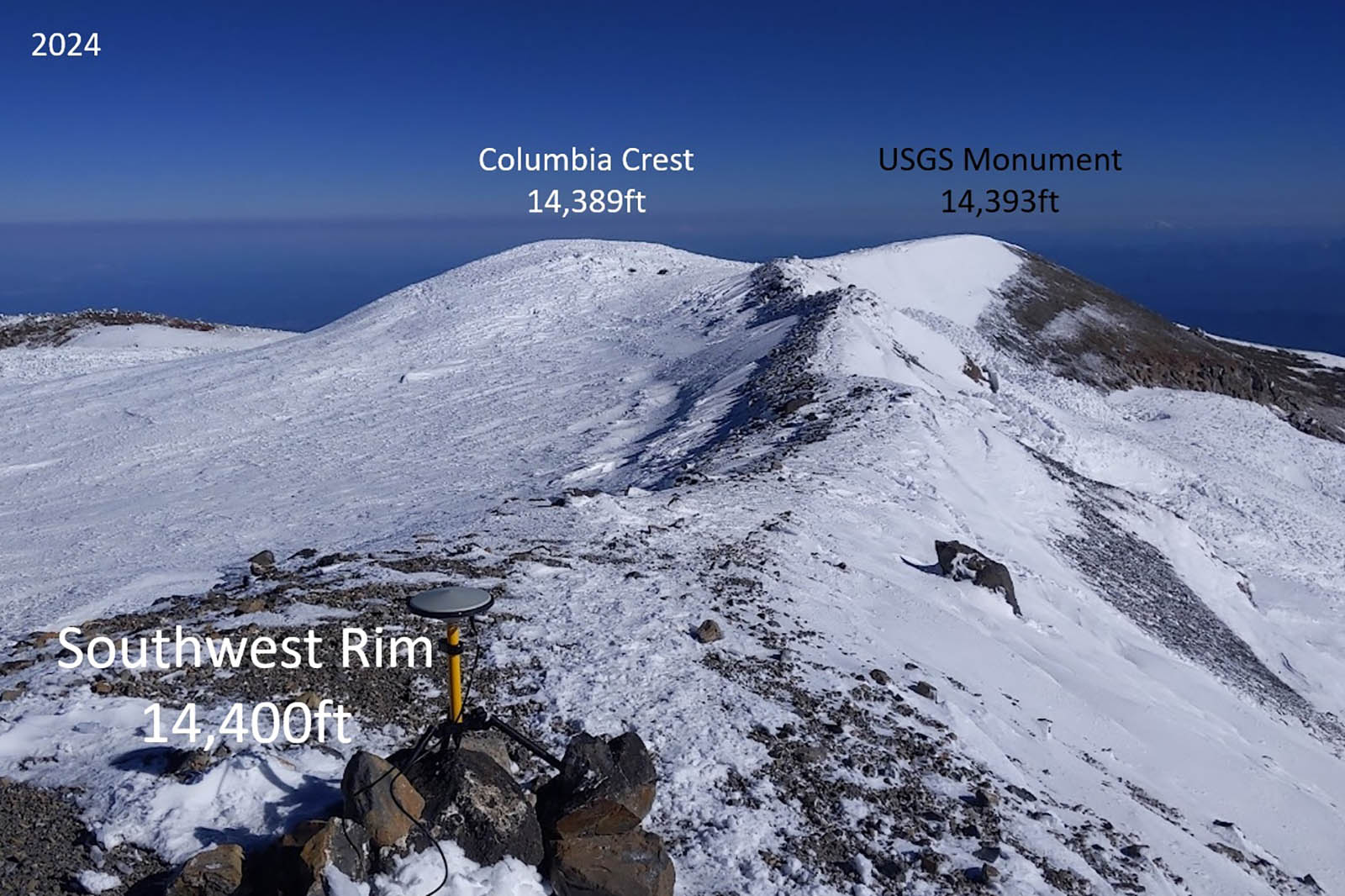
For those dreaming of climbing Mount Rainier, the changed summit is unlikely to add to the challenge.
Zeb Blais, the owner of Washington-based Blackbird Mountain Guides, said he hadn’t heard about Gilbertson’s claim that Columbia Crest had melted down. But he also wasn’t surprised. As a guide, he has summited Mount Rainier over 100 times. He’s watched the mountain’s snowy highpoint shrinking every year.
“Columbia Crest would look slightly different depending on weather patterns,” he said. “Some years it wouldn’t have much snow. Other years, it was probably a couple feet higher.”

As for the new summit, Blais said he’d likely discuss the issue with his guides. Some of Mount Rainier’s eastern routes will likely be affected. Coming from that direction, it will only take about 10 minutes longer to reach the new summit. That’s “arguably insignificant” in terms of the overall effort of summiting, Blais said. For other routes, it might take a bit longer, and guides will have to decide if reaching the “true summit” is worth the extra time and risk.
However, the melted summit is another example of how Mount Rainier is changing, Blais said, along with many mountains around the world. As climate change shrinks glaciers and ice on mountains like Rainier, they become more dangerous to climb.
That was apparent this summer. One of the mountain’s longtime guiding services altered the normal route to avoid a melting glacier. This “extreme change” makes the route significantly longer, according to Blais. That’s why it’s only the second time guides have taken that route since companies began guiding in the late 1960s, he said.
“Climbing the mountain has gotten more complicated,” Blais said. “They’re taking extreme measures to get around obstacles that the glaciers now present.”
A Mission to Measure Mountains

As an accomplished alpinist himself, Gilbertson knows too well how quickly mountains can change — and how difficult it is to reach and measure them.
On the website Country Highpoints, Gilbertson and his brother Matthew have chronicled their goal of climbing to the highpoint of every country in the world. Often, that means ascending some of the world’s tallest mountains. Over the last 20 years, they’ve reached the highest point of 145 countries, braving harsh weather and even armed locals.
Eric also pursues many adventures by himself or with other climbing partners. He’s climbed K2 without oxygen and numerous other Himalayan peaks. And last year, he became the third American to receive his Snow Leopard certificate. This Soviet Union-era accomplishment requires climbing five 7,000m peaks located in remote reaches of countries like Kazakhstan, Tajikistan, and Uzbekistan.
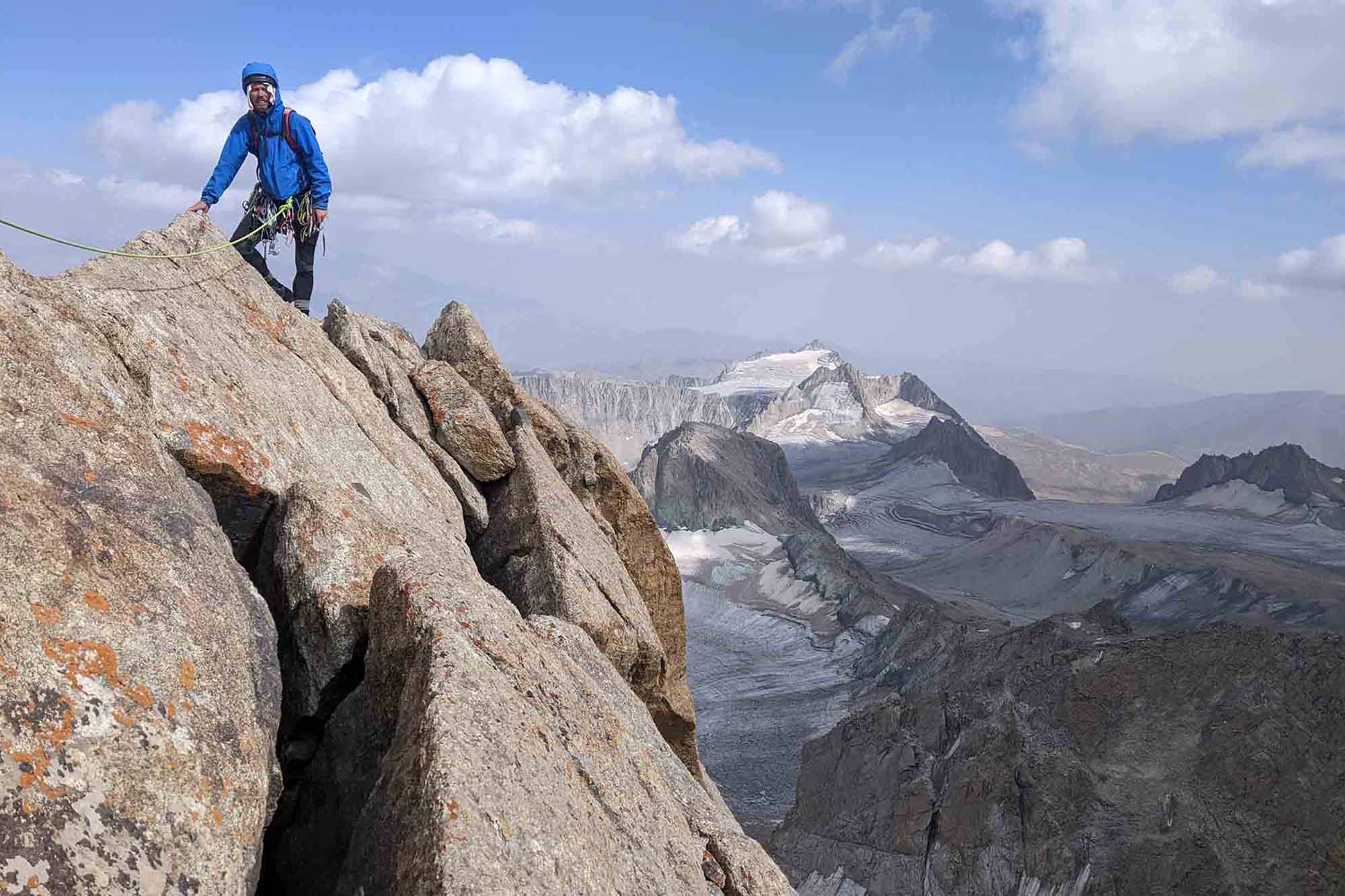
However, Eric Gilbertson has more in mind than climbing the world’s toughest mountains. He’s also an MIT-trained engineer with an interest in surveying.
His adventures, both with his brother and others, have resulted in new confirmed highpoints for several countries, including Saudi Arabia, Togo, Gambia, and Guinea-Bissau. In Uzbekistan last year, Gilbertson’s measurements confirmed that Alpomish — not Khazret Sultan — is actually the tallest mountain in Uzbekistan.
Now, after honing his surveying skills in some of the harshest environments in the world, Gilbertson has yet another project. He’s measuring the impact of climate change on mountains in Washington state.
Grant With American Alpine Club
In July 2024, Gilbertson heard back from the American Alpine Club: He had gotten a grant. He’d applied to the national organization after measuring several of Washington’s mountains in his free time.
His idea was simple. He wanted to take new measurements of Washington’s mountains using modern technology and find out how they were being affected by climate change.
“In my application, I said we estimated that Rainier had melted down a lot. Unfortunately, the hypothesis was correct,” he said.
Eventually, the American Alpine Club wants Gilbertson to publish his findings in a scientific journal and give public presentations. But first, he has to measure at least a half-dozen more peaks. That includes a few more mountains that have ice caps on the peaks, like Liberty and El Dorado, as well as Colfax, which has a glacier on the saddle.
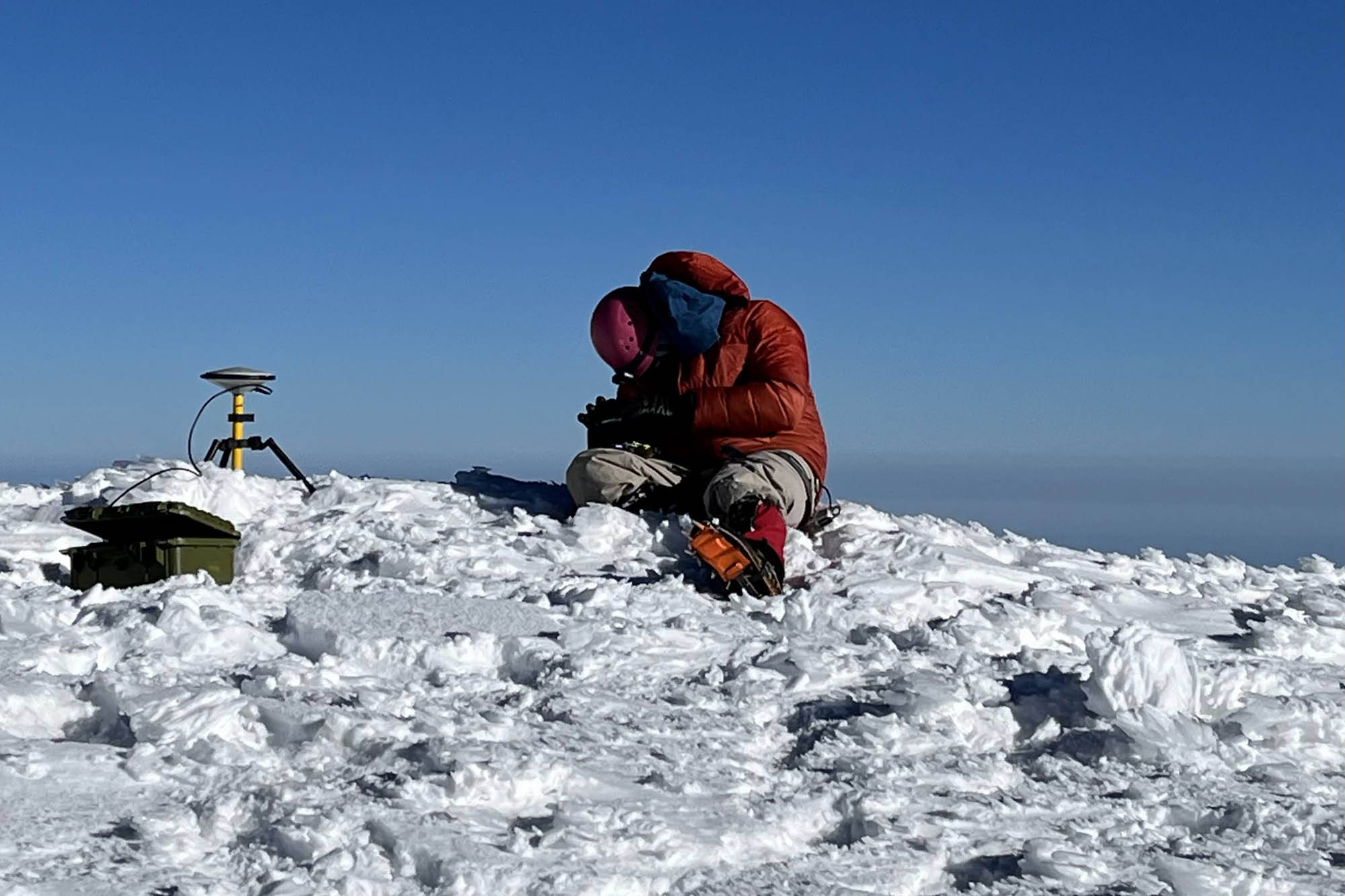
He also wants to take another look at Mount St. Helens. Some measurements have suggested the active volcano is shrinking in height by 4 inches a year. He thinks the cause might be erosion, but he’s not sure.
And while there’s always a margin of error in this work, Gilbertson said the technology has advanced enough to make his findings more reliable than anything done in the past. When he first started measuring mountains with survey-grade GPS, Gilbertson was surprised at the complexity of simply figuring out the height.
Using about 20 pounds of equipment, Gilbertson will spend up to an hour taking a single measurement using satellite data. Then he takes several more from other points on the mountain. But when he’s finished, his measurement will be accurate to 1 inch.
Back in 1998, the last time the USGS went to Rainier, the equipment was much heavier and bulkier, requiring a team of dozens just to take a less accurate measurement. With this new technology in hand, experienced mountaineers like Gilbertson could redefine mountains all over the globe.
“Most of the mountains in the world have not been measured to this level of accuracy,” Gilbertson said. “I think there’s a good chance that the elevations are not quite what we think.”
